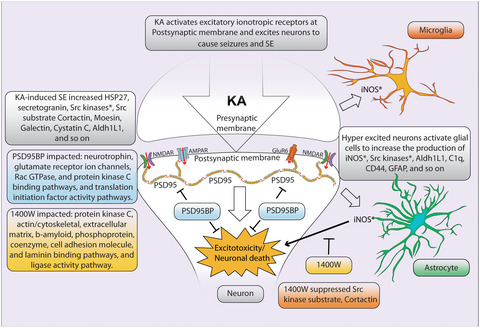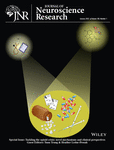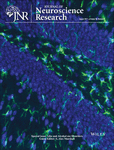Journal list menu
Export Citations
Download PDFs
Table of Contents
Converging early responses to brain injury pave the road to epileptogenesis
- First Published: 29 November 2017
Astrocytes and Glutamine Synthetase in Epileptogenesis
- First Published: 18 July 2018
Glial source of nitric oxide in epileptogenesis: A target for disease modification in epilepsy
- First Published: 12 December 2017
The impact of postsynaptic density 95 blocking peptide (Tat-NR2B9c) and an iNOS inhibitor (1400W) on proteomic profile of the hippocampus in C57BL/6J mouse model of kainate-induced epileptogenesis
- First Published: 15 May 2019

Kainate (KA)-induced status epilepticus hyperexcites neurons and activates ionotropic glutamate receptors, including NMDAR, AMPAR, and GluR6. These receptors physically interact with postsynaptic density protein 95 (PSD95) which acts as a scaffolding protein at the postsynaptic membrane. PSD95 activation and its interaction with NMDARs are mediated by Src kinases* which drive hyperexcitability and neurodegeneration. Hyperexcited neurons activate both microglia and astrocytes to induce the expression of inducible nitric oxide synthase (iNOS)* and Src kinase*. The products of these enzymes, and many other proteins, exacerbate hyperexcitability, and activate neuroinflammation and neurodegeneration pathways. Thus, the hypothesis is that PSD95 blocking peptide (PSD95BP; Tat-NR2B9c) and the iNOS inhibitor 1400W will impact KA-induced changes. *Note: The starred proteins were not detected in the present study.







